France had not held a major retrospective of Eugène Delacroix's work since the centenary of his death in 1963. An exhibition at the Louvre this spring and summer, which has moved to the Metropolitan Museum in New York until January 6th, 2019, shows how relevant the French painter's oeuvre remains today.
Delacroix (1798-1863) broached enmity between Muslims and Christians in two of his earliest and best known paintings: The Massacre at Chios (1824) and Greece on the Ruins of Missolonghi (1826). Turkish Ottoman troops had massacred the entire population of the Greek island of Chios in 1822. The Greek city of Missolonghi was besieged and conquered by the Ottomans in 1826.
The poet Charles Baudelaire, who was one of Delacroix's most avid supporters, wrote that "everything in his oeuvre is desolation… smoking, burning cities, raped women, children thrown under the hooves of horses or stabbed by delirious mothers".
The French state bought Liberty Leading the People but quickly withdrew the painting from exhibition, out of fear it might inspire other revolts
Delacroix's portrayal of human suffering was the antithesis of neo-classical painting, which by the 1820s was going out of fashion. It was not unlike the work of modern photojournalists. Indeed, The Massacre at Chios has been compared to the Algerian photographer Hocine's 1997 Madonna of Bentalha, which won the World Press Photo Award.
Delacroix's most famous work of reportage – indeed his most famous work, full stop – was his 1830 Liberty Leading the People. The painter watched the Paris riots of July 27th-29th, 1830, at close range. His Liberty is a bare-breasted woman, brandishing the tricolour and striding across a barricade strewn with bodies. "If I did not fight for my country, at least I painted for her," he wrote. The state purchased "Liberty" for the Musée du Luxembourg, but quickly withdrew the painting from exhibition, out of fear she might inspire other revolts. Today, she is a national treasure deemed too precious to send to New York.
Delacroix's Greek paintings were inspired by the British poet Lord Byron, surely a rebuke to any Brexiteer who doubts the shared cultural history of Britain and Europe. Like a modern-day political activist, Byron inflamed the youth of Europe with his espousal of the Greek cause. The dead hand emerging from the rubble of Missolonghi in an elegant sleeve is that of Lord Byron, who died there. French aristocrats who fled to England during the revolution precipitated a wave of "anglomania" when they returned to restoration France. Shakespeare, Walter Scott and Byron were translated into French.
In 1825, Delacroix chose to travel to England, not Italy, to pursue painting. Back in Paris, he frequented Alexandre Dumas, Victor Hugo, Lamartine and Stendahl, who like Delacroix loved English literature and clothing.
From British painters, Delacroix learned to appreciate categories considered minor in France: landscapes, portraits, still lifes and animal scenes. The tigress in Young Tiger Playing with its Mother (1830) is regal as an odalisque. Delacroix set the felines against a rural landscape, far removed from the Paris zoo where he sketched them.
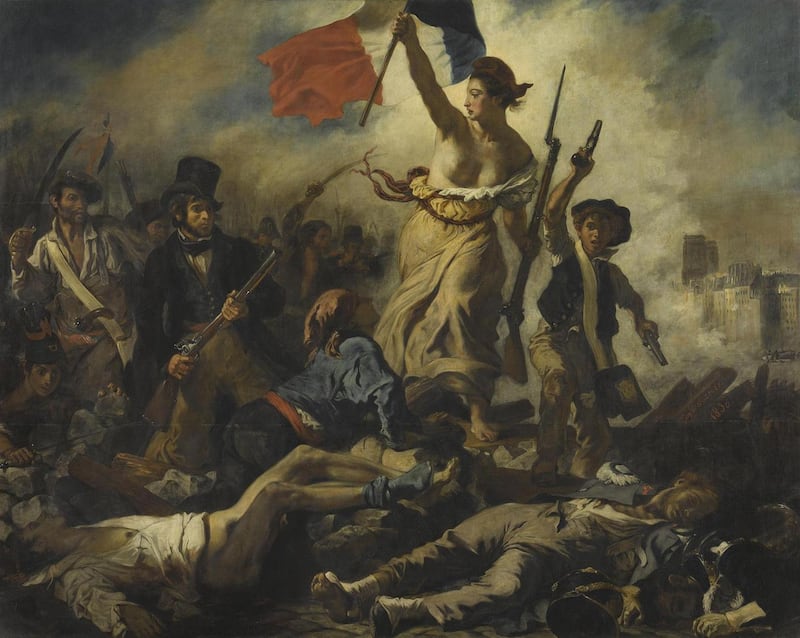
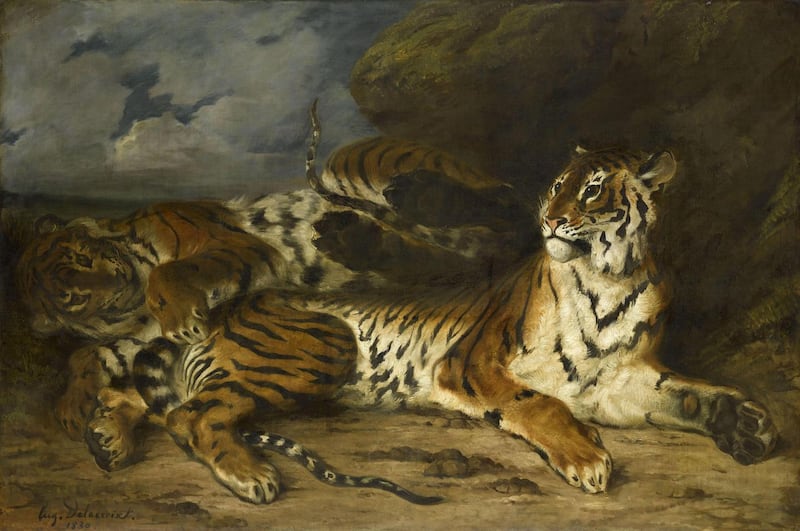
Family connections
Delacroix’s father Charles served as a foreign minister for revolutionary France. He lost his job to Talleyrand. A persistent rumour, fanned by the painter’s physical resemblance to Napoleon’s great diplomat, said Talleyrand had an affair with Delacroix’s pretty mother Victoire and was his biological father.
In any case, the Delacroix family were ruined when Eugène was a teenager, by the fall of Napoleon and the Bourbon restoration. Eugène decided to become a painter at the age of 17. Seven years later, he painted his first masterpiece, The Barque of Dante, working long hours while a friend read Dante's Inferno aloud. In the painting, the Italian poet is guided by Virgil in a precarious boat while ghoulish figures of the damned devour each other in the black waters of the Styx.
Delacroix showed Dante to great acclaim at the 1822 salon. "Glory is not a vain word for me," he wrote in his diary two years later. "The sound of praise fills one with genuine happiness." Yet throughout his long career, Delacroix would fall in and out of favour. He was not admitted to the fine arts section of the French academy until the age of 57, after seven failed candidacies.
The Death of Sardanapalus (1827) was savaged by critics and provoked a scandal. The king's director of fine arts summoned Delacroix and ordered him to "change styles". The painting is so large that it cannot be moved from the romantic painting section of the Louvre. It shows the last Assyrian king of Ninevah, watching impassively as his concubines, eunuchs and horses are slaughtered around him. Sardanapalus is defeated, and has decided to immolate himself with all his possessions.
The scene is theatrical, chaotic, exotic, orgiastic. The name Sardanapalus became a byword in France for excess. When Dominique Strauss-Kahn was accused of pimping at a trial in 2015, a prosecution lawyer called the former IMF director a “modern-day Sardanapalus”.
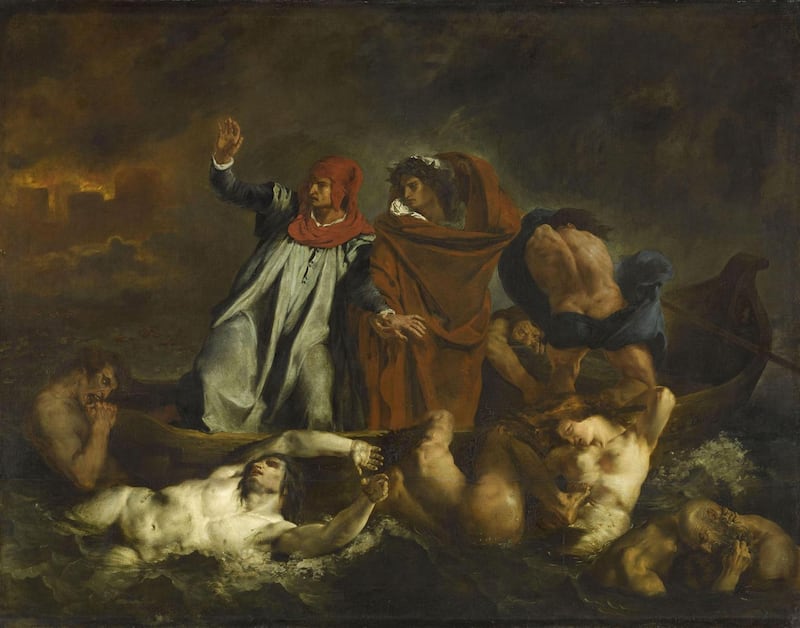
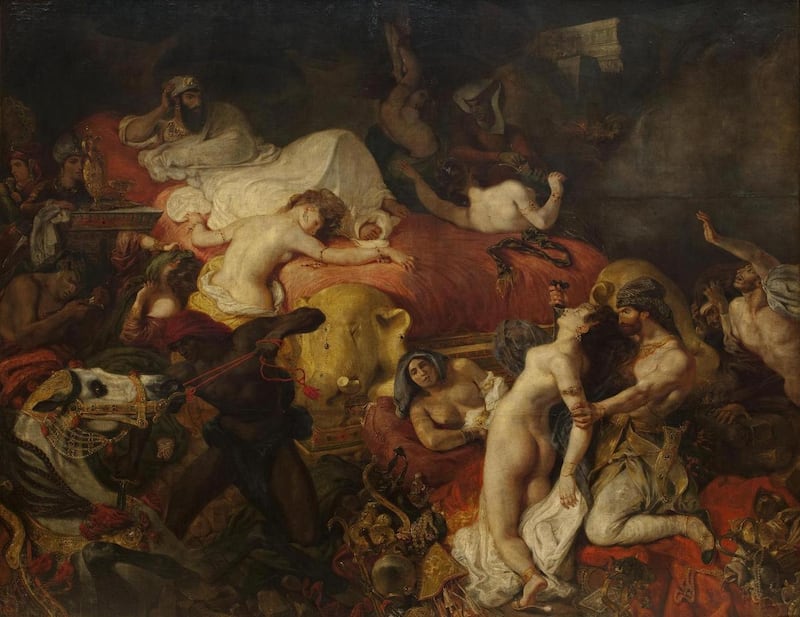
Quintessential romantic
Sardanapalus sealed Delacroix's reputation as the quintessential romantic painter. Asked if he accepted the label, Delacroix said, "If by romanticism one means the free manifestation of my personal impulses, distancing myself from the rules set in schools, and my distaste for the recipes of the academy, I must confess that not only am I a romantic, I was from the age of 15."
In 1832, Delacroix accompanied an envoy of the French king to Spain, Morocco and Algeria. He filled hundreds of pages of notebooks with sketches, watercolours and text. He would go back to these notes for decades afterwards, basing paintings on the sketches, like a journalist using earlier work to write books. France had invaded Algeria only two years before, and relations between North African Arabs and French colonialists were tense.
For the sake of safety, Delacroix could not go out without an armed escort. He despaired of seeing Arab women, until the chaouch or local public servant who ran the port of Algiers allowed him to visit his harem. Delacroix fulfilled orientalist fantasies in his painting of Women of Algiers in their Apartment. Three Arab women sit indolently in filtered light, waited on by a Moorish servant. The painting exudes calm and silence. It was admired by Manet, Renoir, Gauguin and Matisse. And it inspired Picasso's Women of Algiers, which sold for $179million in 2015.
Like romantic poetry or music, Delacroix's paintings are so detailed, so rich, that they sometimes overwhelm you. A portion of a painting excerpted from the rest, for example the woman on the far left in Women of Algiers, can prove more effective on its own.
Curators of the Louvre-Metropolitan exhibition call 1822-1832 Delacroix’s “conquering decade”. Virtually all of his best-known paintings were completed during this period, after which he abandoned all modern and political subjects. In 1848, for example, the year of yet another French revolution, Delacroix painted neo-baroque floral arrangements. He was hostile to the brutal realism of Courbet, who was 21 years his junior, and whose painting had come into vogue.
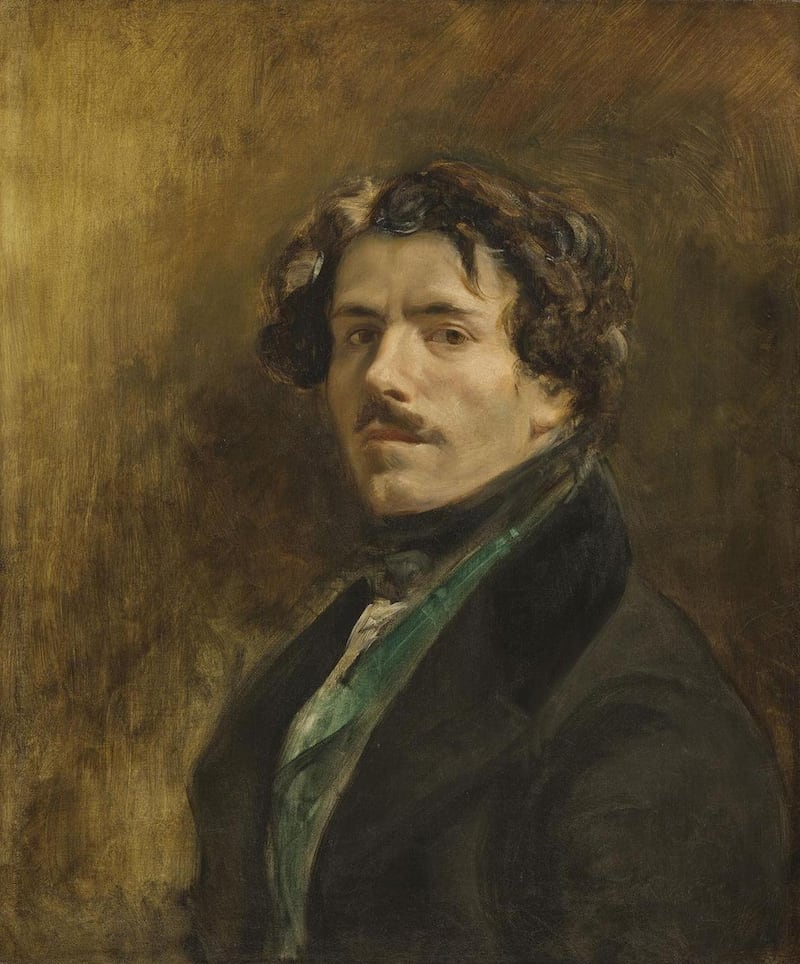
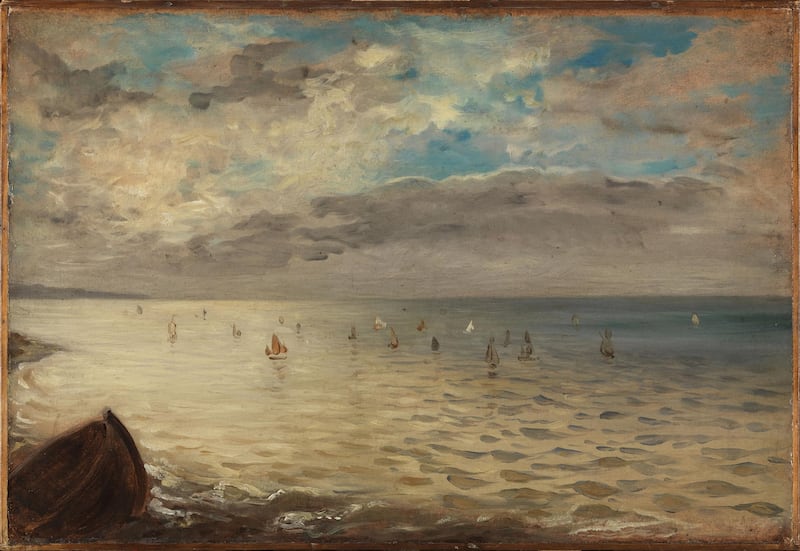
Large murals
There are two theories about why Delacroix largely devoted himself to the painting of large murals, commissioned by church and state, from the 1830s on. Sébastien Allard of the Louvre speculates that official France wanted to support him as a leading artist, but also sought to kerb his daring. Delacroix himself believed that large decorative murals would ensure his place in history. He painted frescoes in the senate and national assembly, on the ceiling of the Apollo gallery in the Louvre, and in the église Sant-Sulpice.
When after a 23-year break, Delacroix resumed keeping a diary in 1847, he recorded his efforts to keep his painting simple, to avoid the rich fabrics and jewels and exhuberant colours that characterised his earlier work. “My palette no longer wanders,” he wrote.
Had the leading romantic painter been intimidated by critics? In later years, Delacroix favoured smaller formats. He painted from memory and adopted outmoded themes from historical novels. Delacroix also developed a passion for the sea. He could “stand without moving for more than half an hour on the sand, touching the waves, without tiring of their fury, of their coming in and out, of foam and pebbles,” he wrote in his diary. His “Sea from the Heights of Dieppe” (1852) was painted 20 years before the Monet canvas that gave its name to the impressionist movement, but Delacroix’s seascape, with its barely suggested sailboats on water reflecting the sky, could easily qualify as the first impressionist painting.
Delacroix is at the Metropolitan Museum, New York, until January 6th










